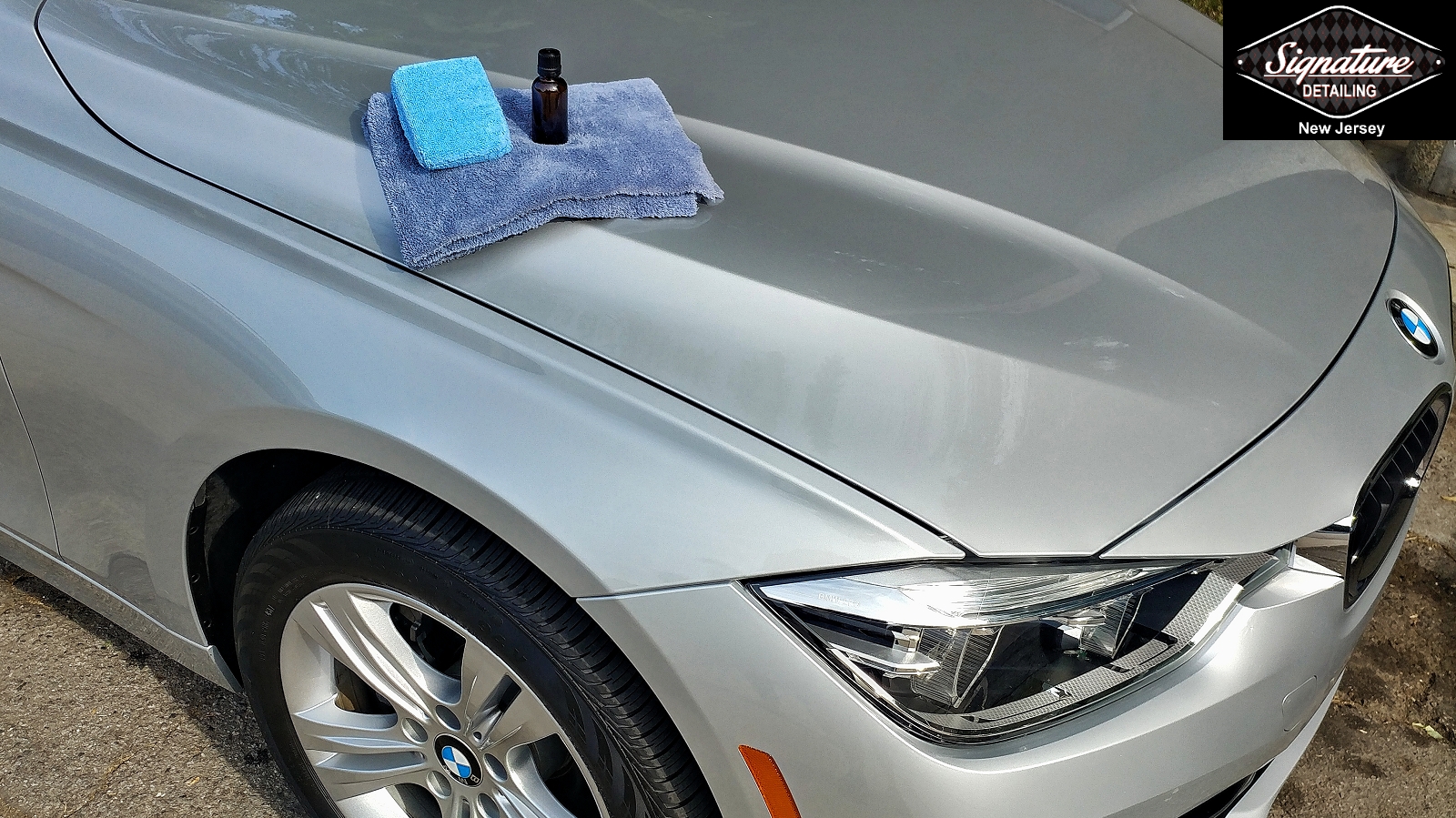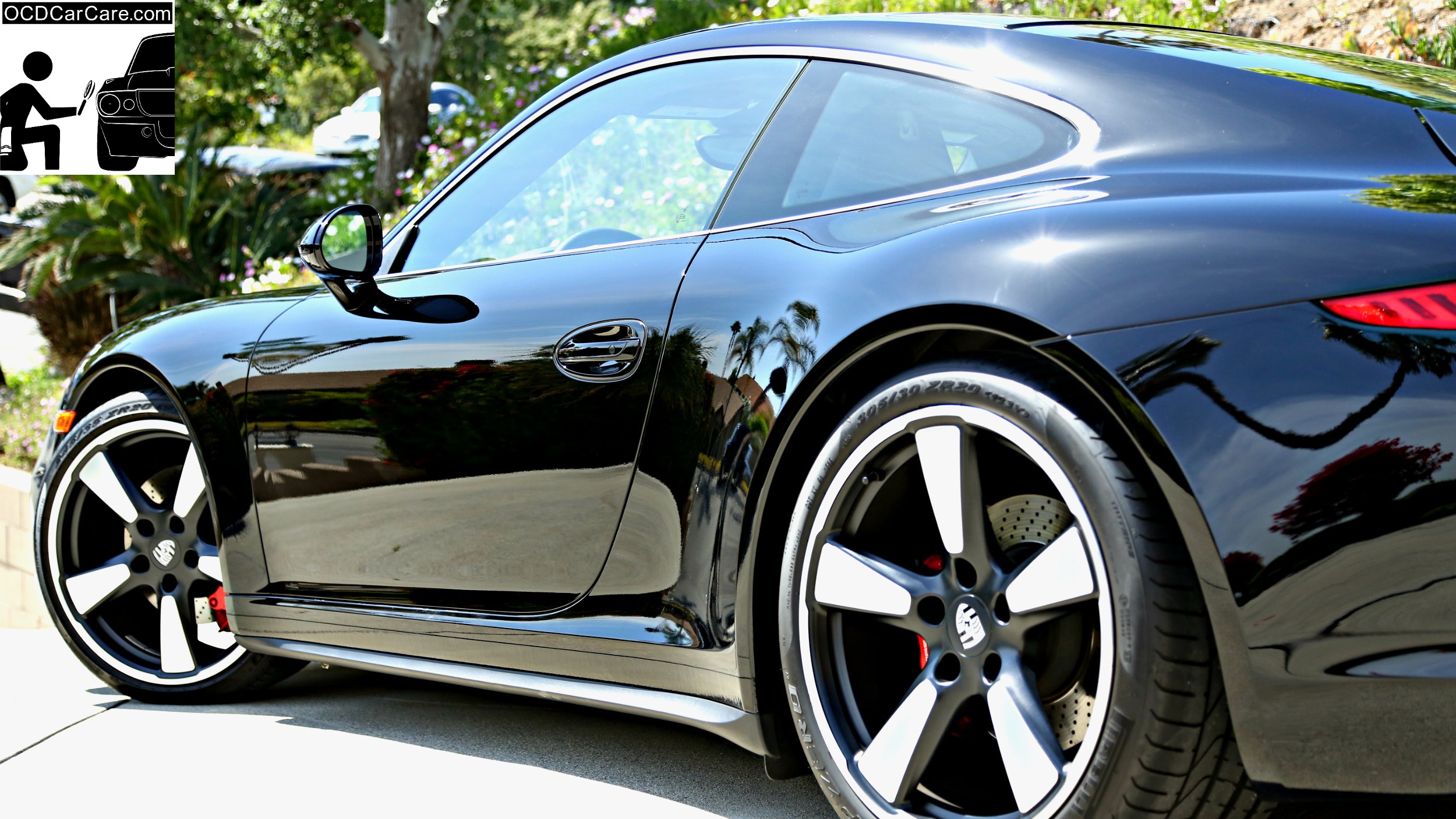High-End Auto Detailing at Conforti Auto and Marine Detailing Ceramic Coating
High-End Auto Detailing at Conforti Auto and Marine Detailing Ceramic Coating
Blog Article
Just How Detailing Ceramic Covering Enhances the Longevity of Your Car's Paint
Ceramic layer has arised as a critical modern technology in automotive describing, using a resilient solution for maintaining the integrity of your auto's paint. Recognizing the ins and outs of just how ceramic layer jobs and its benefits over typical wax can offer important insights for car owners.
What Is Ceramic Finishing?
Recognizing the protective benefits of ceramic covering starts with identifying its make-up and performance. Ceramic covering is a liquid polymer put on the outside surfaces of cars, mainly designed to improve and protect vehicle paint. The crucial component of this finishing is silicon dioxide (SiO2), which is stemmed from all-natural materials like sand. This substance creates a solid chemical bond with the factory paint, creating a safety layer that is both sturdy and hydrophobic.
The finishing's application entails meticulous prep work of the automobile's surface area, which have to be free from impurities, scratches, and imperfections to guarantee ideal bond. As soon as applied, the ceramic layer treatments to develop an inflexible shield that can hold up against different environmental aspects, including UV rays, chemical stains, and oxidation.
Furthermore, ceramic finishings are not merely surface-level treatments; they pass through the paint to give a lasting defense. This functionality expands the lifespan of the lorry's looks while keeping its value in time. Comprehending these essential elements of ceramic finish is essential for auto owners seeking efficient remedies for paint conservation and enhancement.
Advantages of Ceramic Finish
The advantages of ceramic coating expand much beyond its standard protective attributes - Conforti Auto and Marine Detailing Ceramic Coating. One of one of the most considerable benefits is its capability to give extraordinary resilience. Unlike standard wax or sealers, ceramic finishings create a strong bond with the auto's paint, enabling it to stand up to ecological hazards such as UV rays, acid rainfall, and roadway salt. This durability dramatically lowers the risk of paint damage, protecting the car's aesthetic appeal.
Additionally, ceramic coverings supply hydrophobic residential properties, suggesting they push back water and contaminants. This particular not only makes the vehicle easier to clean however additionally reduces the regularity of cleaning, conserving both effort and time for cars and truck proprietors. The slick surface developed by the finish protects against dirt and crud from sticking, enhancing the auto's total cleanliness.
Additionally, ceramic coverings enhance the deepness and clearness of the paint, giving lorries a glossy surface that is visually striking. This visual enhancement better adds to maintaining the car's resale worth, as a well-kept exterior is a major selling factor for possible customers. In general, the benefits of ceramic covering make it a worthwhile financial investment for anyone wanting to protect and enhance their automobile's paintwork.
How Ceramic Layer Functions

The finishing's hydrophobic buildings push back water and dirt, stopping the buildup of crud on the surface. This not only makes the car easier to clean yet additionally decreases the probability of scrapes and swirl marks brought on by traditional washing techniques. Furthermore, the ceramic layer works as a guard versus UV rays, which can create fading and oxidation with time.
As soon as treated, the layer displays exceptional resistance to chemicals, including road salts, bird droppings, and tree sap, which can otherwise damage the paint. The durability of ceramic finishes can last for a number of years, depending on aspects such as upkeep and environmental problems. Overall, the chemical bonding procedure of ceramic layers provides a robust protection that preserves the honesty and appearance of a vehicle's paintwork.
Contrasting Ceramic Finishing to Wax
Contrasting ceramic finishing to standard wax reveals substantial distinctions in performance and durability. While both products intend to safeguard an automobile's paint, their make-ups and resilience set them apart. Wax, typically made from all-natural carnauba or synthetic materials, offers a temporary shield that typically lasts only a recommended you read few weeks to a few months, depending upon environmental problems and upkeep regimens.
In comparison, ceramic coatings are advanced remedies composed of inorganic products that bond chemically with the vehicle's paint. This develops a robust, semi-permanent layer of protection that can sustain for several years. Because of this, ceramic layers offer premium resistance to UV rays, chemical spots, and physical abrasion, considerably reducing the threat of oxidation and fading.
Moreover, the hydrophobic buildings of ceramic finishings guarantee that water beads up and rolls off the surface, making it extra hard for dust and gunk to stick. This ease of cleaning is a noteworthy benefit over wax, which can bring in dust and need frequent reapplication. Eventually, for car proprietors looking for resilient defense and boosted visual appeal, ceramic finishes provide an extra reliable choice to standard wax items.
Upkeep Tips for Longevity
Correct upkeep is crucial for making best use of the long life of a ceramic finishing. Make use of a pH-balanced car hair shampoo to avoid breaking down the covering, and prevent automatic vehicle cleans with harsh brushes that can trigger micro-scratches.
To keep the hydrophobic residential or commercial properties of the ceramic finish, take into consideration applying an upkeep spray or booster especially developed for ceramic finishes every few months. This will certainly strengthen the safety layer and enhance water beading.
Furthermore, avoid exposing the coated surface to severe ecological problems whenever possible. Vehicle parking in shaded locations or using an auto cover can prevent UV damage and Visit Website contamination from bird droppings, tree sap, or commercial results.
Last but not least, check the finishing regularly for indicators of wear or damages. If you see a decrease in hydrophobic actions, it might be time for a specialist reapplication. By adhering to these upkeep suggestions, automobile proprietors can significantly extend the life and efficiency of their ceramic layer, making sure that their vehicle's paint remains protected and visually appealing for many years to come.
Verdict

Report this page